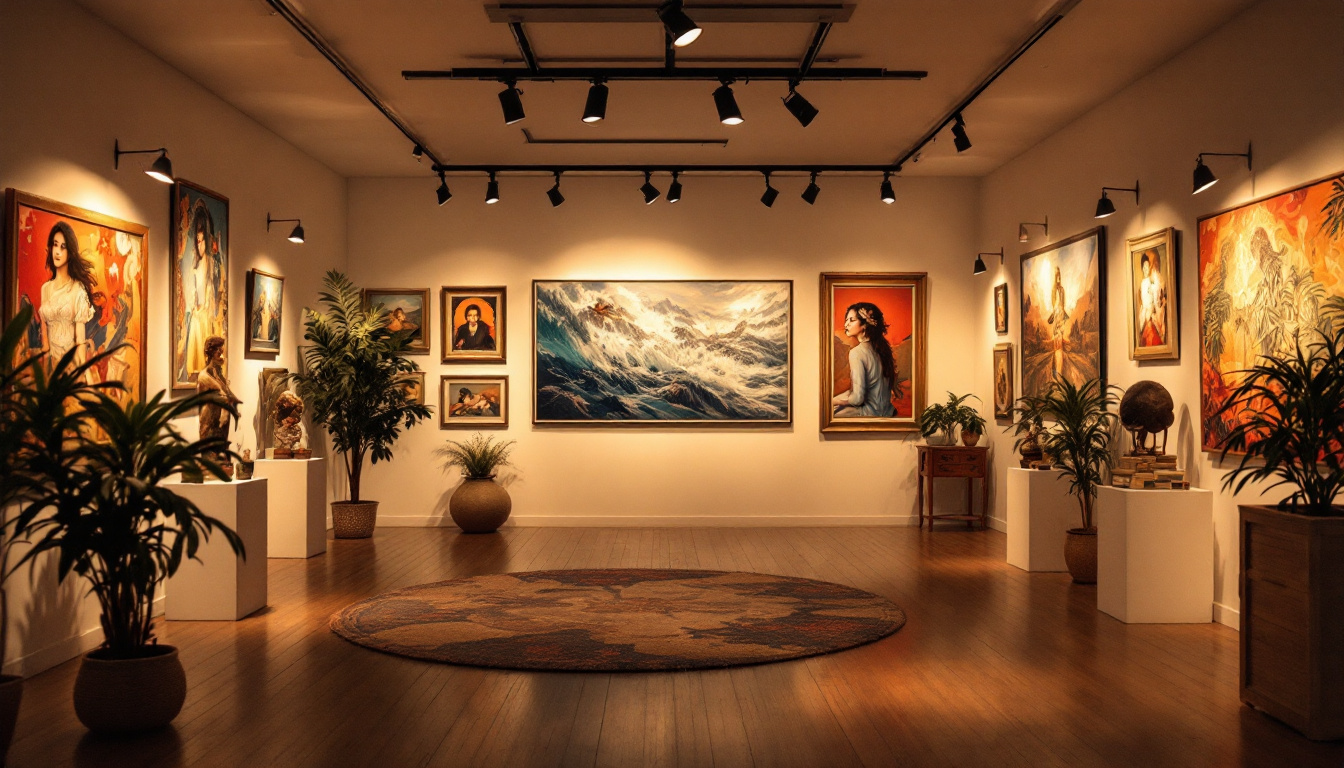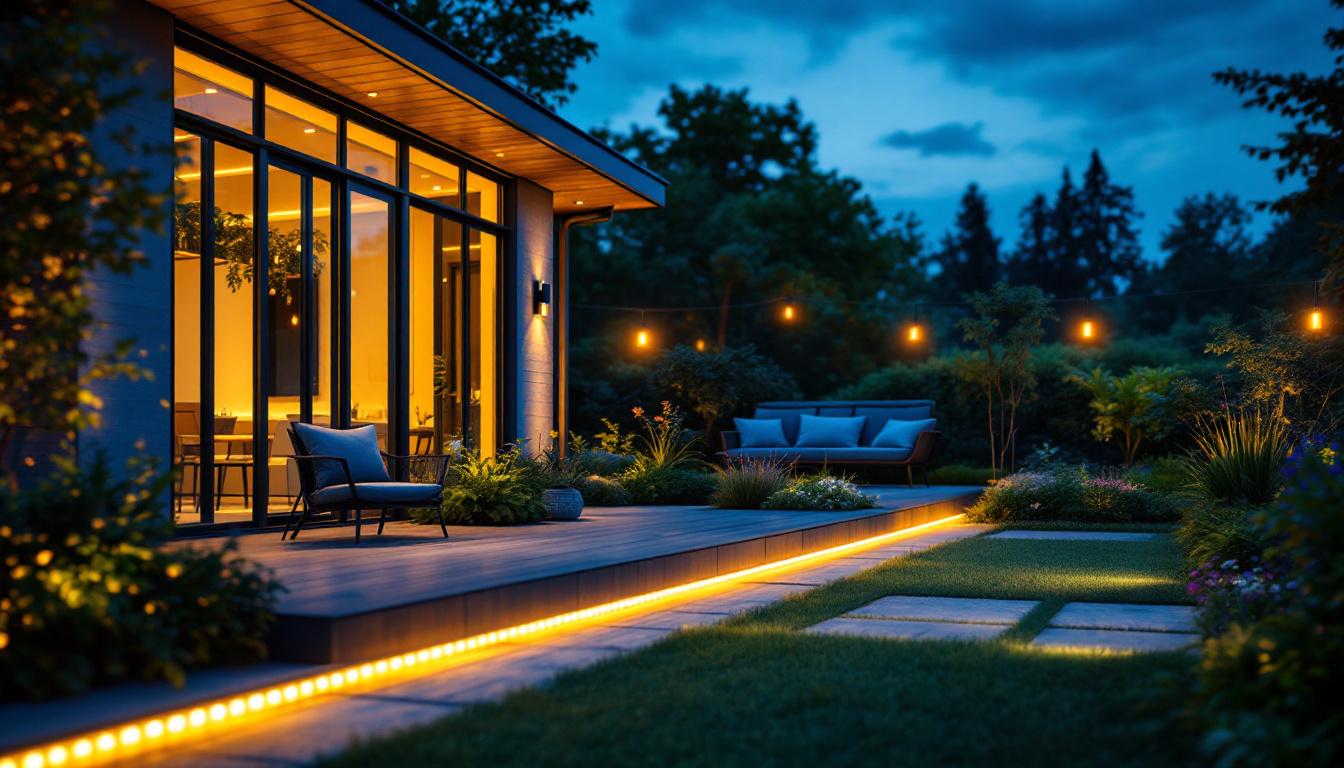
Lighting plays a crucial role in showcasing artwork, influencing how colors, textures, and details are perceived by viewers. For lighting contractors, understanding the specific needs of art galleries can significantly enhance project efficiency and client satisfaction. This article delves into the importance of art gallery lamps and how they can streamline lighting projects, ultimately leading to successful installations.
Art galleries are unique spaces that require specialized lighting to highlight the nuances of each piece on display. Unlike typical commercial spaces, galleries must consider the impact of light on various mediums, including paintings, sculptures, and installations. Proper lighting not only enhances the aesthetic appeal of the artwork but also preserves it over time.
The right lighting can transform a gallery space, drawing attention to specific artworks while creating an inviting atmosphere. Art gallery lamps are designed to provide focused illumination, ensuring that each piece is viewed in its best light. By utilizing adjustable fixtures, contractors can tailor the lighting to suit different exhibitions, enhancing the overall visual experience for visitors. Moreover, the strategic placement of lights can create dramatic shadows and highlights, adding depth and dimension to the artworks, which can evoke emotional responses from the audience. This interplay of light and shadow can turn a simple viewing into an immersive experience, encouraging viewers to engage more deeply with the art.
Another critical aspect of gallery lighting is the preservation of the artwork itself. Many art pieces are sensitive to light exposure, which can cause fading or deterioration over time. Utilizing lamps with adjustable intensity and color temperature allows contractors to create a lighting plan that minimizes potential damage while still providing adequate visibility. This balance is essential for maintaining the integrity of the artwork. Additionally, galleries often employ UV-filtering technologies in their lighting systems to further protect sensitive pieces from harmful rays that can lead to irreversible damage. By investing in these advanced lighting solutions, galleries not only safeguard their collections but also demonstrate a commitment to the longevity and care of the artists’ work, fostering a sense of trust and respect within the art community.
When considering lighting options for art galleries, various types of lamps can be employed, each serving distinct purposes. Understanding these types can aid contractors in selecting the most suitable fixtures for their projects.
Track lighting is a popular choice in art galleries due to its versatility and adjustability. These systems allow for multiple fixtures to be mounted on a single track, enabling contractors to direct light precisely where it is needed. This flexibility is particularly beneficial for galleries that frequently change exhibits, as it allows for quick adjustments without the need for extensive rewiring.
LED spotlights are another excellent option for art galleries. They provide bright, focused light while consuming less energy compared to traditional incandescent bulbs. Additionally, LED technology offers a range of color temperatures, allowing contractors to choose the perfect hue to complement the artwork. The longevity of LED bulbs also reduces maintenance costs, making them a cost-effective solution for gallery lighting.
Wall washers are designed to evenly illuminate large wall surfaces, making them ideal for galleries displaying paintings or photographs. These fixtures can create a soft, diffused light that enhances the overall ambiance of the space. By strategically placing wall washers, contractors can ensure that the entire wall is bathed in light, drawing attention to the artwork without creating harsh shadows.
Selecting the right lamps for an art gallery involves considering several factors that can impact both the efficiency of the lighting project and the overall success of the installation.
The Color Rendering Index (CRI) is a critical metric for art gallery lighting. It measures how accurately a light source displays colors compared to natural light. A high CRI rating (90 or above) is essential for art galleries, as it ensures that colors in the artwork appear true to life. When selecting lamps, contractors should prioritize those with high CRI ratings to enhance the viewer’s experience.
Flexibility in lighting design is crucial for galleries that host various exhibitions. Lamps that offer adjustable brightness and beam angles allow for customized lighting setups tailored to specific artworks. Additionally, integrating smart lighting controls can further enhance project efficiency by enabling remote adjustments and pre-programmed lighting scenes, making it easier for gallery staff to manage lighting during events.
Energy efficiency is a significant consideration for any lighting project. Art galleries often operate for extended hours, making energy-efficient lighting solutions essential for reducing operational costs. By opting for LED lamps and fixtures with energy-saving features, contractors can help galleries maintain a sustainable lighting system while also benefiting from lower utility bills.
Creating an efficient lighting design for an art gallery requires careful planning and execution. By following best practices, contractors can ensure that their lighting projects are completed on time and within budget.
Before beginning any installation, it is advisable to conduct a lighting audit of the gallery space. This involves assessing the existing lighting conditions, identifying areas that require improvement, and determining the specific needs of the artworks on display. A thorough audit lays the foundation for an effective lighting design that meets both aesthetic and functional requirements.
Once the lighting audit is complete, the next step is to develop a comprehensive lighting plan. This plan should outline the types of lamps to be used, their placement within the gallery, and the desired lighting effects. By visualizing the layout and considering factors such as beam angles and distances, contractors can create a cohesive lighting design that enhances the overall gallery experience.
Collaboration with gallery curators is essential for ensuring that the lighting design aligns with the artistic vision of the exhibition. Curators often have specific preferences regarding how artworks should be illuminated, and their insights can provide valuable guidance during the design process. By working closely with curators, contractors can create a lighting solution that not only meets technical requirements but also resonates with the artistic intent of the exhibition.
Incorporating specialized art gallery lamps into lighting projects offers numerous benefits that extend beyond mere aesthetics. These advantages can significantly enhance the overall efficiency of lighting installations.
When galleries are illuminated effectively, the overall experience for visitors is greatly enhanced. Improved lighting allows for a more engaging and immersive experience, leading to higher levels of client satisfaction. Satisfied clients are more likely to recommend contractors to other galleries or institutions, ultimately benefiting their business.
Using specialized art gallery lamps can streamline the installation process. With fixtures designed specifically for gallery settings, contractors can reduce the time spent on adjustments and modifications. The ease of installation, combined with the ability to quickly adapt lighting setups for different exhibitions, contributes to overall project efficiency.
While the initial investment in high-quality art gallery lamps may be higher than standard lighting options, the long-term cost savings are significant. energy-efficient lamps reduce electricity bills, while durable fixtures require less frequent replacements. Additionally, protecting artwork from damage through proper lighting extends its lifespan, ultimately saving galleries money on restoration and replacements.
Despite the many benefits of art gallery lamps, there are challenges that contractors may encounter during lighting projects. Being aware of these challenges can help in developing effective strategies to overcome them.
One of the primary challenges in art gallery lighting is finding the right balance between aesthetics and functionality. While the goal is to create an inviting atmosphere, it is equally important to ensure that the lighting adequately highlights the artwork. Contractors must carefully consider the placement and intensity of lighting fixtures to achieve this balance.
Budget constraints can also pose challenges in selecting the best lighting solutions for art galleries. While high-quality lamps may offer superior performance, they may not always fit within the allocated budget. Contractors must be adept at finding cost-effective alternatives that still meet the necessary lighting requirements without compromising quality.
The rapid pace of technological advancements in lighting can create challenges for contractors who may struggle to keep up with the latest innovations. Staying informed about new products, techniques, and best practices is essential for ensuring that lighting designs remain current and effective. Continuous education and professional development are crucial for navigating this ever-evolving landscape.
Art gallery lamps play a vital role in enhancing lighting project efficiency for contractors. By understanding the unique requirements of gallery spaces and selecting the appropriate lighting solutions, contractors can create visually stunning environments that showcase artwork while preserving its integrity. The strategic use of specialized lamps not only improves client satisfaction but also streamlines installation processes and offers long-term cost savings.
As the world of art continues to evolve, so too does the need for innovative lighting solutions. By embracing the latest technologies and collaborating closely with gallery curators, lighting contractors can position themselves as leaders in the field, ensuring that their projects not only meet but exceed the expectations of their clients.
Ready to elevate your lighting projects to the next level? At LumenWholesale, we provide the exceptional art gallery lamps you need to bring your installations to life, all while ensuring the preservation and enhancement of precious artwork. Our commitment to quality, affordability, and convenience sets us apart, offering you the best value in wholesale lighting. Say goodbye to inflated markups and hello to spec-grade lighting that meets the highest industry standards. Take advantage of our hassle-free bulk buying with free shipping and transform your lighting projects today. Discover wholesale lighting at the best value now and make your mark in the world of art gallery illumination.

Discover essential tips and best practices for lighting contractors to effectively install and utilize wall pack LED lights.

Discover essential tips for using outdoor solar LED strip lights effectively and avoid common pitfalls in your lighting projects.

Discover essential insights into metal solar lights that every lighting contractor should know.

Discover how Pedant Light is revolutionizing the lighting industry by streamlining operations for contractors.